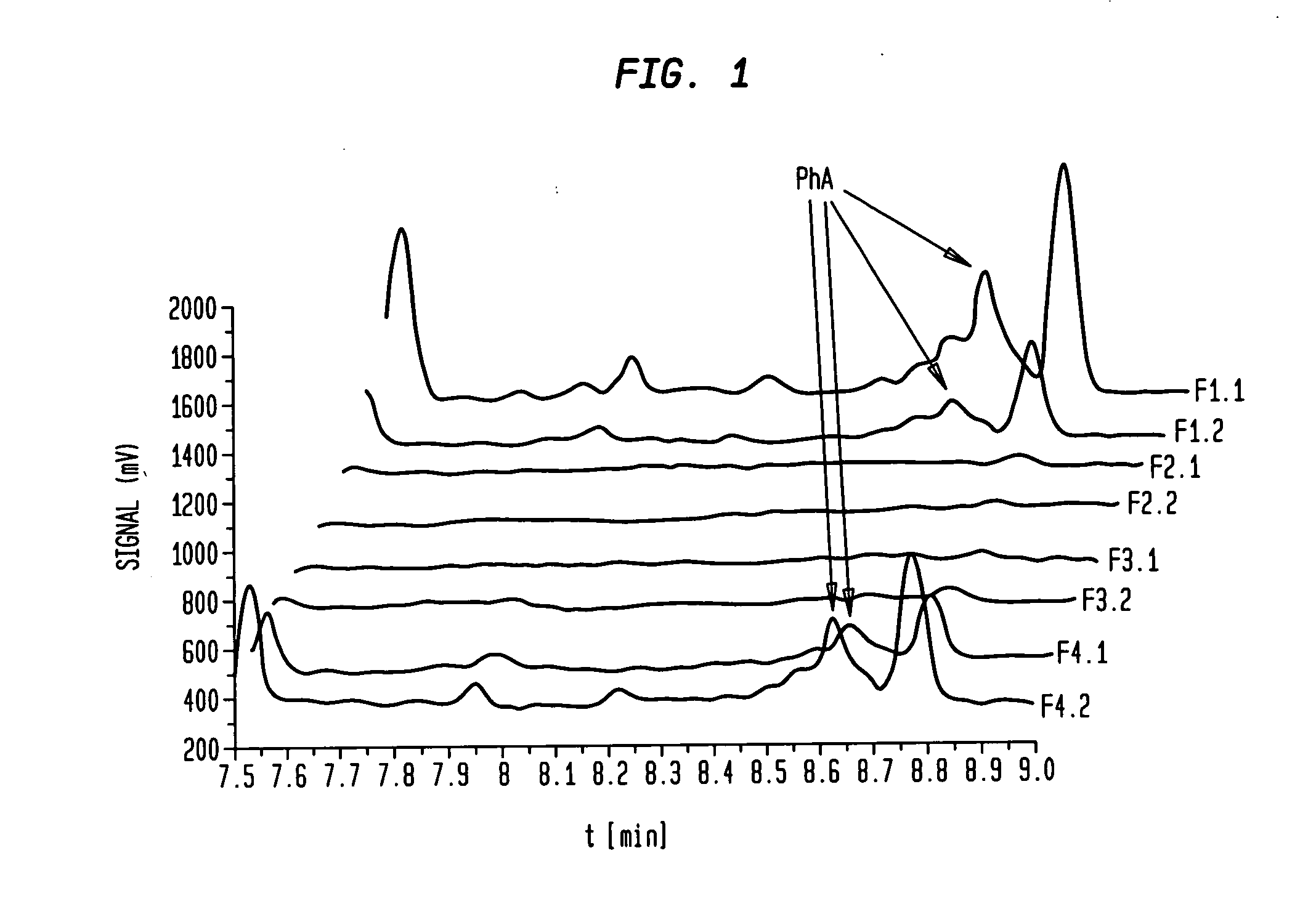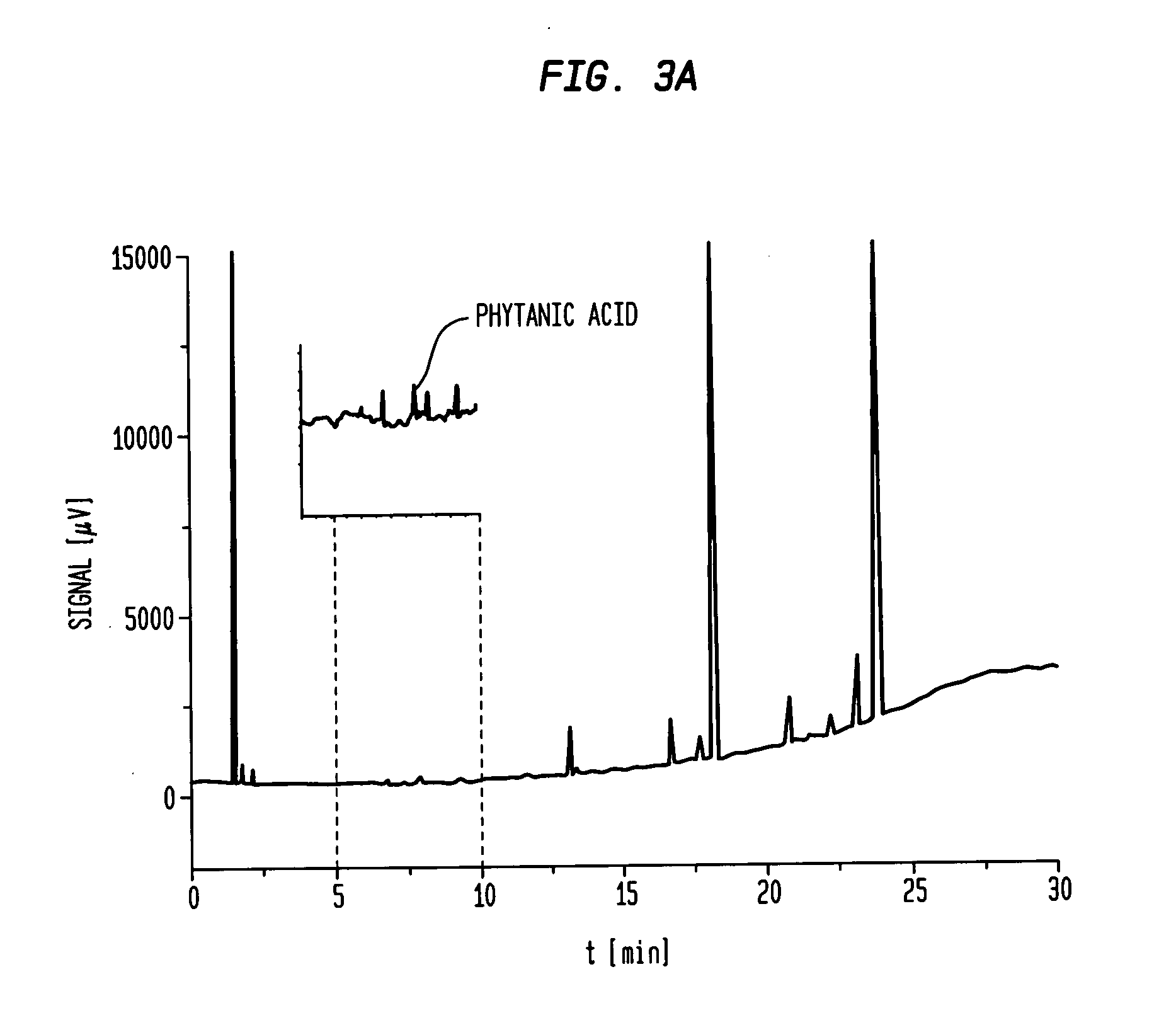Fatty acid fractionation process, fatty acid products and use thereof
a technology of fatty acid fractionation and fatty acid products, which is applied in the direction of fatty substance preservation using additives, biocide, carboxylic compound separation/purification, etc., can solve the problem of inability to separate the pha from the fatty acid mixture by classical oil refining methods, and achieves easy implementation, reduced health risks, and increased efficacy
- Summary
- Abstract
- Description
- Claims
- Application Information
AI Technical Summary
Benefits of technology
Problems solved by technology
Method used
Image
Examples
example 1
[0091]A commercially available fish oil (EPA content 20%, DHA content 9%) was transformed to the ethyl ester with ethanol and sodium ethylate as catalyst according the standard procedure. A large part of the saturated and mono unsaturated fatty acid ethyl esters were removed by standard state of the art urea precipitation. The resulting product contained 45% EPA, 19% DHA and 4000 ppm PhA. This product was used as starting material for further processing and was injected (2 kg) onto a 150 liter stainless steel fractionation column packed with a mixture of diol- and aminopropyl silica material at 52° C., 163 bar and a CO2 flow of 700 kg / h. The eluate was collected in eight fractions (F1.1. to F.4.2.) The PhA was enriched especially in fraction one (F1.1.) and two (F1.2.) up to a content of more than 10%. Fraction three (F.2.1.) to fraction eight (F.4.2.) usually contain no, or less than 100 ppm PhA.
[0092]FIG. 1 shows the first section (between 7.5 and 9.0 min) of the GC chromatograms ...
example 2
[0095]The collected fractions one and two from example one were used as starting material for further enrichment of PhA. This starting material contained 8% PhA. The reprocessing was done under the same conditions as under example one. Fraction one of the reprocessed product contained 41.07% PhA. This is shown in FIG. 2, tR 8,067.
example 3
[0096]FIG. 3a shows the GC chromatogramm of commercial available EPA / DHA formulation containing 84% EPA+DHA and 1600 ppm PhA.
[0097]The chromatogram shown in FIG. 3a complies with the example given in the European Pharmacopoeia 6.3 Monograph Omega-3 Acid Ethyl Esters 90 which is attached as FIG. 3b.
[0098]For example 3, a feed similar to the product according FIG. 3a was used as a starting material for the supercritical fluid chromatography (“SFC”) process. 5 kg of this feed was injected onto the fractionation column under the same conditions as in example 1. Eight fractions were taken. Fraction one and two were collected for subsequent PhA enrichment (as described in example 1) while fractions 3 to 8 were collected as PhA free EPA / DHA product. FIG. 3c shows the GC chromatogram of such a product containing less than 50 ppm PhA.
PUM
| Property | Measurement | Unit |
|---|---|---|
| Fraction | aaaaa | aaaaa |
| Fraction | aaaaa | aaaaa |
| Fraction | aaaaa | aaaaa |
Abstract
Description
Claims
Application Information
 Login to View More
Login to View More - R&D
- Intellectual Property
- Life Sciences
- Materials
- Tech Scout
- Unparalleled Data Quality
- Higher Quality Content
- 60% Fewer Hallucinations
Browse by: Latest US Patents, China's latest patents, Technical Efficacy Thesaurus, Application Domain, Technology Topic, Popular Technical Reports.
© 2025 PatSnap. All rights reserved.Legal|Privacy policy|Modern Slavery Act Transparency Statement|Sitemap|About US| Contact US: help@patsnap.com



